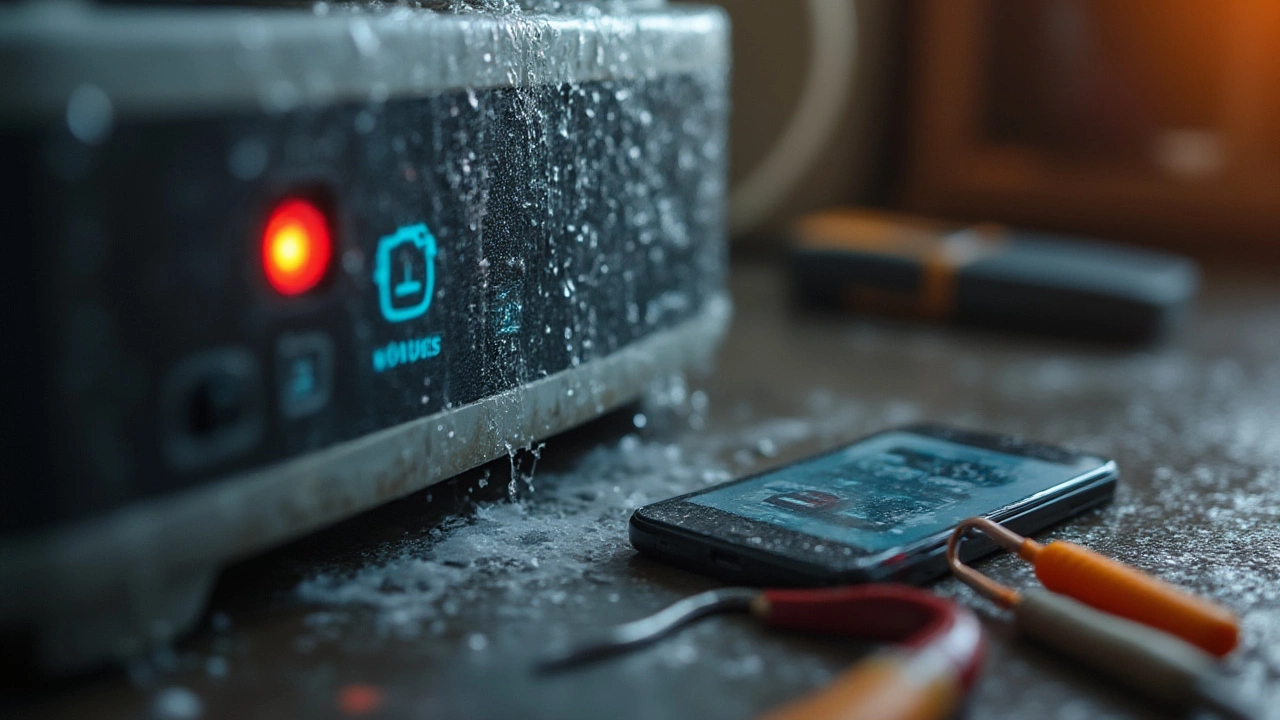So you’re feeling the heat, your AC is humming away, but the air in your place is as still and warm as a summer night in July. It’s easy to panic—are you on your own, or is this a common thing? Turns out, ‘my heat pump runs but doesn’t cool’ is one of those classic summer complaints. Funny enough, heat pumps are known for their efficiency, but they still have their moments when they seem to forget their real job. Let’s dig into what’s actually going on, what you can do before calling someone, and why sometimes the solution isn’t as expensive as you think.
How Heat Pumps Work—and Where They Can Go Wrong
If your heat pump is running but not cooling, the culprit often hides in plain sight. Here’s the deal: a heat pump basically acts like an air conditioner in the summer. It sucks the warm air out of your house and dumps it outside. But it’s still a machine, with filters, fans, refrigerant, switches, and sensors, all set up in a delicate balance.
One fascinating thing about heat pumps is that they work by moving heat instead of generating it—kind of like a reverse refrigerator for your whole house. When that system gets thrown off, cooling stops, even though the motor keeps humming. Did you know that the U.S. Department of Energy says more than 40% of home energy use goes to heating and cooling alone? And out of 100 service calls for heat pump “not cooling” complaints, most are traced back to basic issues homeowners can actually spot or fix.
Here’s a quick table that shows the leading causes of heat pump cooling failures and how often they crop up, based on actual repair records:
| Cause | Percentage of Cases |
|---|---|
| Dirty Air Filter | 37% |
| Thermostat Issues | 19% |
| Refrigerant Leaks | 14% |
| Frozen Coils | 13% |
| Electrical/Control Problems | 8% |
| Broken Fan or Blower | 6% |
| Other Mechanical Failures | 3% |
There’s one more thing: heat pumps are smarter than a lot of us give them credit for. Many shut down cooling mode if they sense ice buildup or unsafe refrigerant pressure, which means the system is actually trying to protect itself—not just quitting on you.
Heat Pump Not Cooling? What to Check First
You don’t need to be a tech to do some basic troubleshooting—just quick, careful checks can fix up to half the problems that send people reaching for the phone. Here’s what you should try before making a service call (and shelling out for the visit):
- Check the air filter: You’d be amazed how often a clogged filter is the root cause. If yours looks dirty or clogged, swap it out. Experts recommend changing it every 1-3 months in heavy use seasons.
- Look at your thermostat: Make sure it’s set to ‘cool’ and the temperature is set below room temp. Digital thermostats can lose settings after power blips. Try a reset.
- Inspect vents and registers: Blocked or closed vents reduce airflow, which means less cooling. Make sure furniture, curtains, or dust aren’t blocking them.
- Is the outdoor unit dirty? Leaves, dirt, or debris can choke the outdoor condenser. Turn off the power and use a hose to clear things off. Don’t bend the fins—straighten gently with a butter knife if needed.
- Listen for strange noises: Rattling or buzzing can signal loose parts or a dying fan motor, both common heat pump issues.
If it all looks good and you’re still not cooling, have you noticed ice? Ice on the outdoor or indoor coils can be a huge red flag. If you see ice, turn the system OFF (but keep the blower ON if possible) and let it thaw. This might get things moving again while you wait for a pro.
One practical life hack: sometimes “not cooling” is really “not enough cooling.” Heat pumps can struggle on super-hot days, especially if they’re undersized for your space or fighting bad insulation. If your pump seems to run forever during a heatwave but can’t keep up, you may need a pro’s opinion on whether it’s installed right for your home’s real needs.

Commonly Overlooked Problems You Can’t See
Even the savviest homeowner can miss heat pump issues that aren’t visible or obvious. A big one is refrigerant. Your pump needs the right charge of refrigerant—think of it like oil in a car. Too little, and nothing works as it should. A slow leak often leaves enough to limp along, but not enough to actually cool.
Want to know a sneaky stat? National HVAC data shows 74% of heat pumps over 8 years old have minor refrigerant losses that go unnoticed for months or years. That means efficiency and cooling power drop off gradually, until you suddenly notice the house just isn’t comfortable anymore.
Electrical issues trip up a lot of systems, too. If the contactor (the relay that switches from heating to cooling) sticks or fails, you might hear the system running but the compressor isn’t working its magic. Ditto for a shorted capacitor, which can kill the cooling mode even if the fan hums along. Unlike clogged filters or dirty coils, these are things you really want a pro to handle—one wrong move and you’re in for a shock in multiple ways.
Then there’s the defrost mode. Heat pumps have a built-in defrost cycle to melt off ice that forms outside in winter. Sometimes, the controls get stuck and leave the system in the wrong mode even in summer, so instead of pulling heat out, it does… nothing. If you’re comfortable around electronics and your manual shows how to switch modes, you can try a reset, but for most folks, this is another call-the-expert situation.
Modern heat pumps may flash error codes on the thermostat or display. If yours does, note down the code and check your manual or the brand’s website—some codes have DIY fixes, others need a tech with tools and know-how.
When to Call in the Pros (and How to Avoid Future Cooling Fails)
If you’ve run through the quick checks and nothing changes, or the system keeps freezing up, leaking water, or just can’t keep the house cool, it’s time to bring in a specialist. It’s not about being helpless—it’s about not making things worse or risking your warranty.
Here’s what a professional usually does to get your pump back in business:
- Measure refrigerant levels (and safely recharge, if needed)
- Check for leaks using electronic detectors
- Test controls and electrical components
- Inspect compressor and motor function
- Clean and realign coils and fans safely
Fun fact: Most heat pump repairs fall between $150 and $450, and almost half are done within an hour. Catching small problems before they get worse saves you hundreds on damaged compressors or whole-unit replacements later.
If you want to dodge this problem next season, the single best tip is a regular maintenance call, especially before summer starts. Many companies offer annual service packages, and they really pay off by spotting issues early. Want an easy DIY routine?
- Change your air filter every 1-3 months.
- Keep the outdoor unit free of debris, plants, or anything that blocks airflow.
- Open all the indoor vents—closing off rooms stresses the system.
- Watch your electricity bills—a sudden jump can mean the pump’s struggling somewhere.
Surprisingly, up to 85% of “not cooling” cases are solved with simple routine care plus a little attention to air flow around the system—no advanced toolbox required.
So, next time you’re sweating it out and asking yourself why your heat pump not cooling is a problem, don’t assume the worst. Walk through these steps, watch for the telltale signs, and only call in the cavalry when you’ve ruled out the low-hanging fixes. With a little attention, your home comfort won’t just depend on luck—or on how fast you can get someone out to your house in the middle of a scorching week.


